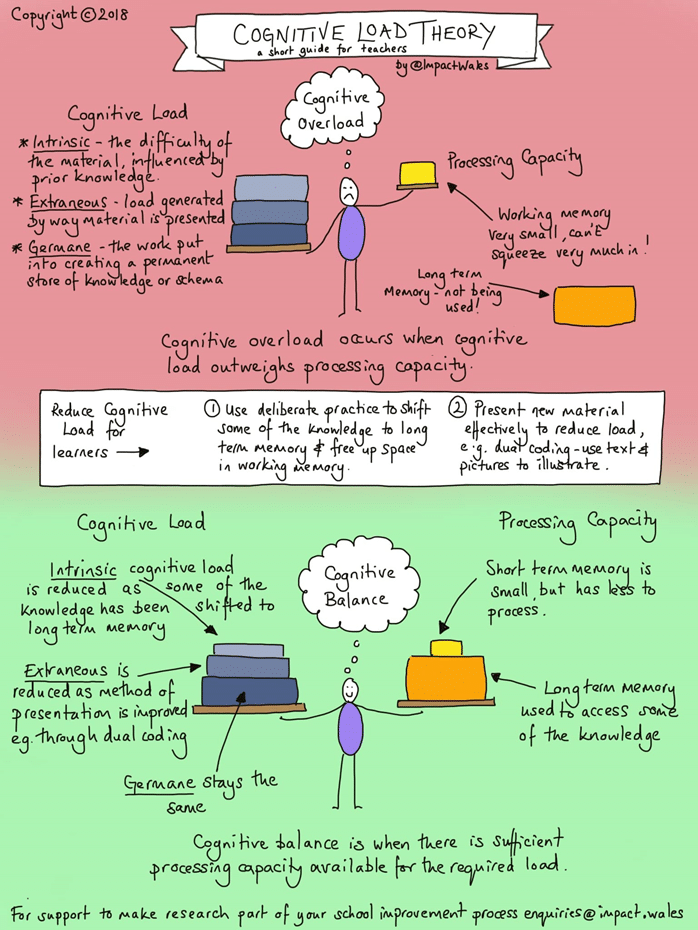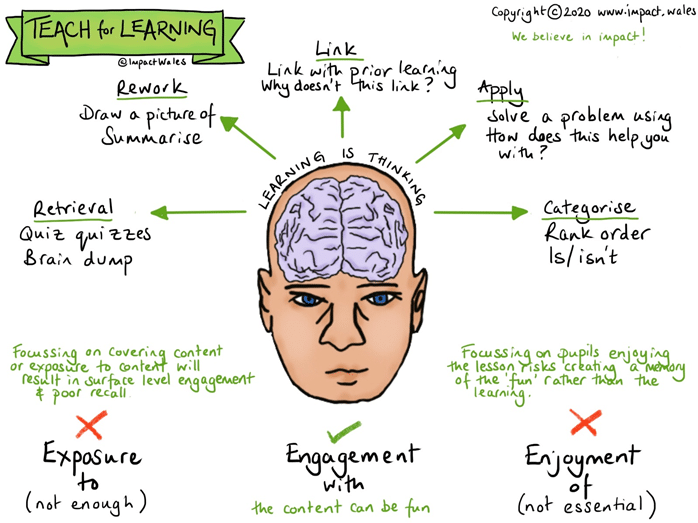PGDE Social Subjects - Newsletter 1
Cognitive Load Theory - an introduction by GCSEPod
In the late 1980s, John Sweller developed a theory about the demands placed on the human memory when we are learning something new. This he named Cognitive Load Theory. Dylan Wiliam subsequently commented that it was the ‘single most important thing that teachers should know’. The theory details three different types of cognitive load, one of which is ‘extraneous load’, that is how the learning is presented to the learner. Sweller suggested that there are ways of reducing the extraneous load, thereby increasing the likelihood of the learning being assimilated by the learner. Strategies such Text source: https://www.gcsepod.com/ , images source: https://www.impact.wales/.
| |||||




Comments
Post a Comment